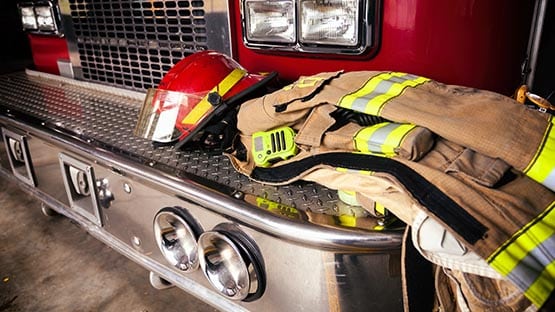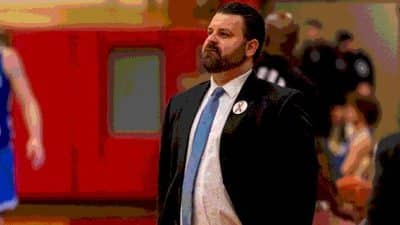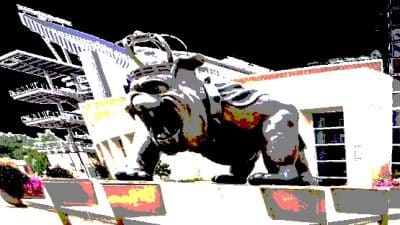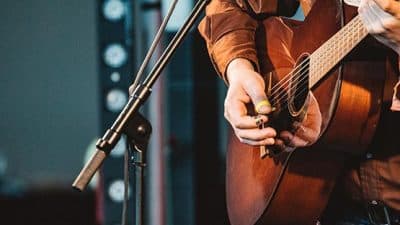By Crystal Graham
[email protected]
(This is the fifth installment in a six-part series on The Valley Responds, an effort that links the Shenandoah Valley with residents of Long Beach, Miss.)
Sunday religious services along the Gulf Coast have been very different since Hurricane Katrina knocked out most of the church structures in Long Beach, Miss.
Services have been moved to structures that withstood the storm – to schools, colleges and skating rinks.
It’s not about one church or one pastor or even one religious affiliation, but instead it’s about working together to console the victims of Katrina.
It’s also about reaching out to many who have never looked to God for help before.
100 years strong
At St. Thomas the Apostle Catholic Church in Long Beach, they are preparing to have mass back at their church for the first time.
At a church with debris and devastation around it – and no walls to shield the destruction from parishoners.
St. Thomas celebrated its 100-year anniversary earlier this year. But it wasn’t the first time the Gulfside church was decimated.
“Camille hit the church and destroyed it,” said Long Beach resident and churchgoer Francis Carruba-Leblanc. “We built a new church a few years later.
“The church looked so strong,” she said, and then corrected herself. “The church is strong.
“The people, that’s the church. I hope they rebuild right there,” she said, pointing ahead to where remains of the church still stand. “I hope it doesn’t happen again, but it’s inevitable.
“But you can’t run away from everything,” Carruba-Leblanc said. “In Kansas, they have tornadoes. In California, they have mudslides or wild fires …”
What’s left
Pastor Louis Lohan agrees with the assessment that a church is far more than a building. He was busy preparing on a Friday for a sacred mass on church grounds in Long Beach.
The Valley Responds, a relief effort that links the Shenandoah Valley and Long Beach, has helped Lohan with preparations at the site where the church once stood in all its glory.
“We’ve used the skidloader in the last five or six days down there to clear debris and get them ready for what’s left of their property out there,” said Jim Sullenger, a Valley Responds volunteer based in Long Beach.
As for the upcoming mass, Carruba-Leblanc wouldn’t miss it.
“You can come back to where you always had mass here,” she said. “That means everything.
“It’s very spiritual here. It’s holy ground.”
Testing faith
One hundred years, a journey of faith, the St. Thomas church Web site reads.
Certainly, the faith of everyone in Long Beach has been tested – not just the parishoners of St. Thomas.
“In the midst of the storm, God’s purpose is to demonstrate the difference he makes in our lives,” said LaRue Stephens, the pastor of First Baptist Church in Long Beach. “Everyone will have the opportunity to see the power of the cross.”
Mother Nature, sure that is an act of God, Stephens said, but the true power of God is the strength He provides after the storm.
“Our people see this as an opportunity to see the difference that God makes.”
After the storm
Stephens rode out the storm – with roofing and shingles and trees falling all around him – in the screened porch of his home.
His son-in-law, Tim, also chose to stay at home, while their families found comfort further inland.
After the storm subsided, the pair ventured out of the house, loaded up in their truck, chainsaw in tow, and headed in the direction of the church.
“We realized this was a very serious storm,” he said.
They parked the truck blocks from the church, climbed over debris at the railroad tracks, and began their journey atop broken glass and debris, en route to the church.
“I could see about half way down to the road, there was a fellow on top of the debris, running at a frantic pace, making a way to the beach,” Stephens remembers.
Later, they found the same man hollering Daddy, daddy.
The man asked the pair if they knew his dad – they didn’t.
They’re gone, sir, he cried out to Stephens, and wept openly in his arms.
The pastor tried to reassure the man that maybe they had been rescued.
Stephens recalls what the man then told him: “You don’t understand, my daddy called me on my cell phone and said water was coming in the house, and the house was caving in on them. And then, his cell phone went dead.”
“Can you imagine crawling all over this debris …” the pastor paused. “Six members of his family perished in that house.”
Cross still standing
Pastor Stephens wasn’t sure where to turn at this point.
He looked up ahead to his church for answers.
“I saw the cross upon our church,” he said. “I realized the cross was still standing.
“I can see the cross, and the roof, but it looks small.”
Later, he realized, he wasn’t seeing the roof at all.
“The walls were gone. There was no contrast between the skyline and water,” he said. “What I was looking at wasn’t the roof, it was the water.
“And I said, God has allowed the walls that divided our church and community to be removed.
“So from my point, I said I came down to see my church, but this is not my church,” he told The Augusta Free Press standing outside a food kitchen well after the lunch rush. “This is the stuff we have accumulated through the years.
“The two things that I discovered and experienced during that moment was that God had given us two eternal gifts. One is His Word, and the other is the church.
“The walls may be gone, but the church is stronger than ever.”
Nourishment of the body, soul
Greg Porter heard the call of Mississippi almost immediately after the news hit television stations across the country.
He drove to the Gulf Coast and set up to cook almost immediately.
For residents returning, the lights created from his portable generators were a welcome sign in the otherwise dark Long Beach.
“We started cooking with our tables in the center median of (Highway 90),” Porter said. “We started cooking, and that first day, we served over 120 hamburgers.
“We had a lot of people coming down to see their houses for the first time,” he said. “A lot of people walked up devastated.
“There’s a whole range of emotions when people come in here,” he said. “Some people were happy to have part of their house left, and other people were thrilled that there was hardly any water damage at all.”
Porter acknowledges that the free food he’s dishing up, now in a tent alongside Highway 90 known as God’s Katrina Kitchen, isn’t the only thing that people are finding together.
“About a week after we had been here, people called me over and said there are three different churches represented here. They said we want to rebuild this town with the spirit still under the tent.”
More than two months after the storm, Porter is still a regular sight to volunteers and residents who take a break for a ham sandwich, chips and applesauce – or whatever the menu of the day offers.
And he has no plans to leave anytime soon. Not until a church can take over the kitchen.
Proudly, he said, nearly two dozen people have said that the fellowship under the tent, under the lights, has changed their lives.
“When they come in and sit down, we try to share Jesus Chris with them,” Porter said. “There is a plan for everything, and God will heal.”













